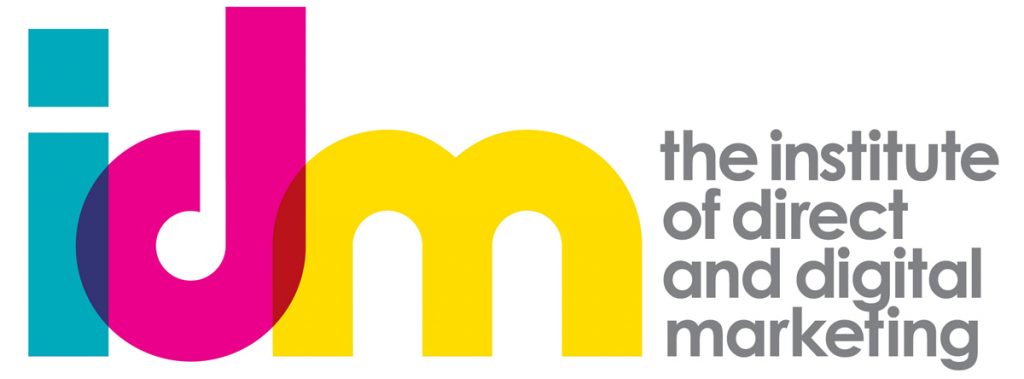First some definitions
Before we start, here is a word of caution: In my experience, the critical reason that CRM projects fail is that they are driven by what technology makes possible rather than what clients need. With that in mind, I cover below the rise of Digital, Mobile, and AI technologies and how this is and will impact the way we manage client relationships.
But first, some definitions of what we are talking about:
Digital Technology
Digital technology represents the analog (wavy lines) world as a binary unit (on/off, True/False, etc). It simplifies how the world is but does so at such scale and speed that it superficially looks the same.
Mobile Technology
Technology has also become mobile through the ability to take your technology wherever you go and access it through any device connected to the internet, e.g., Televisions, Laptops, Tablets, and SMART phones. There is also an Internet Of Things, such as fridges and lights managed by virtual assistants like Alexa.
Artificial Intelligence
There is such noise about this that what it is and how it works can become drowned out. There are two types of AI in the literature – machines that can learn (neural networks) and machines that can think (symbolic manipulation). We are mainly talking about machines that can learn with generative AI. There are four types of machine learning (Transformers, Generative adversarial, Variational autoencoders, and multi-modal models), but describing them goes beyond this article.
History in Brief
Technology has driven how we, as businesses, manage our relationships with customers.
The ’60s and ’70s, to take an arbitrary starting point, saw the growing availability of television. Big businesses who could afford it knew they could reach a mass audience. However, it also meant that they were more transparent to their consumers through exposure, so there was a decline in trust.
The age of information technology through the 80s resulted in a change in the power relationship between businesses and their clients as overproduction caused by the efficiencies it brought about made for a more competitive environment. It is no coincidence that it was during the 80’s that Peppers and Rogers introduced the concept of one-to-one marketing based on developing closer customer relationships.
The information age also saw the introduction of email with MS Mail as a way of asynchronous communication with clients to replace posts. As a marketing tool, this would become ubiquitous and almost replace Direct Mail Marketing.
We had to wait until the 1990s for the Internet to support the World Wide Web, but it wasn’t until the start of the new decade that Google and Facebook began to dominate. The most profound impact on business in the web and internet development was the increased power of the customers who became active participants. Sadly, while many companies pay lip service to this change, it has not yet permeated their thinking, as I will explain below.
Technology became genuinely mobile in the second decade of the new century, 2010, and in the 2020s, we have seen the rise of Artificial Intelligence.
From this, we can see a trend away from the business’s ability to control the relationship with passive customers to a situation where they have become active, if not the dominant players. However, almost all the businesses I talk to still consider controlling the messaging and the relationship.
The impact of Digital Mobile and Artificial Technologies
What does all this mean for the way that businesses Manage the Relationships they have with their Clients:
From Passive to Active Players
Branding is no longer something that businesses can control; it is created by their customers and potential customers when they are outside the room. Customers are, for one thing, much more likely to trust a stranger on a social media site than anything the business says. They are also more likely to seek advice from their peers than experts. So, the voice of the customer is crucial.
Customers are also increasingly co-creating the value that they want rather than the business deciding what it will deliver. Successful co-creation of value in the benefits customers want to receive AND how depends on developing close one-to-one relationships through CRM.
But increasingly, it is not the business that Manages the Relationship with Clients but the clients themselves through portals, chatbots, and self-help.
Artificial intelligence promises to predict the value of these clients to the business and personalise ways to increase that value by enabling straight-through process management and one-to-one client experiences.
Engagement with all Stakeholders
The rapid dissemination of information and ease of access to the internet, along with lower barriers of entry for disruptive competitors, means that businesses must rely on something other than the loyalty of customers. Technological change in products, methods of manufacture, or ways to deliver services is also rapidly copied if it offers any competitive advantage.
The temptation is to reduce costs to cut prices and preserve profits. However, in an almost perfect market, there will always be someone who can deliver the same or similar products at a lower price. And technical advantages in production are also quickly adopted if they are effective. The benefits of scale are not always a protection as new entrants of disruptive competitors have been made more accessible.
That leaves the relationship as the only reliable focus to achieve a competitive advantage. It is increasingly co-created and delivered by employees who co-create the brand with their employers at moments of truth. They provide an experience to customers at these points, which may or may not align with the branding the company has invested so heavily in.
Businesses also use technology to make supply chains more efficient, so they hold less stock to improve cash flow. They are consolidating their suppliers by developing more profound, strategic relationships. They also look to these suppliers for innovations and, in that way, co-create the product.
For these reasons, businesses need to think not just about their relationships with customers as stakeholders but with their employees and suppliers. CRM Technology makes having these relationships at scale possible, and this is increasingly being AI-enabled. With AI, businesses can use these platforms to move from reactive to preemptive, anticipating customers’ desired value.
AI is also opening the possibility of making customer and employee interactions with the business personalized at scale with Virtual Assistants and Chatbots. These may be used in the future to give the appearance of interacting with a human being who is always available 24/7.
Social Media and Relationships
Social Media has become increasingly important, and businesses have begun to realise that they need to have relationships with individual customers (and employees) and communities on social media networks. Belatedly, many have discovered that managing these social relationships is far too crucial to be delegated to college interns and junior staff in the marketing department.
It is increasingly clear that social media has different characteristics and cultures to each other and from more traditional communication channels, so it can’t be treated as simply another way to push advertising messages out. It should instead be seen within an omnichannel communication strategy through the whole relationship and be agile enough to engage clients where they are and across channels like Facebook, email, messenger apps like WhatsApp, and more.
Modern CRM platforms support this omnichannel approach and pull communications from these platforms into a single conversation that the business can track in a Contact record.
AI has impacted this area by effectively predicting how and when to use these channels. However, in the future, such use will be augmented by sentiment analysis to look for mood changes based on the content and frequency of messages received and website pages visited.
AI and Customer Relationships
(I will be publishing a more thorough blog on this subject shortly)
There are at least four areas where AI is already having an impact on the way businesses manage client relationships:
Making sense of data
Throwing a rubbish tip of data at an AI tool and expecting something meaningful to emerge is risky. However, I remember many (40) years ago using factorial analysis to find trends in data, and AI tools are doing something very similar but making this generally available. That helps to identify trends in customer behaviours that can be very insightful.
Preemptive Client Experiences
Preemptive client experiences are still relatively new, but in principle, machine learning could predict the relationships that each client wants and then be used to “program that in” to their experience. That could, for example, result in touching the customer even before they know that this is what they want.
Predictive Analysis
Machine learning is currently used to predict which clients are at risk based on rich data sets so that mitigating action can be taken. Retaining the clients you want is crucial in maintaining and growing profits – a 5% increase in retention is said to result in at least 20% and up to 120% increases in profit.
Help with Communication
CRMs increasingly offer integration with Chat GPT and other AI-enabled tools, such as Grammarly (which I use to edit my blogs), to help write customer emails. Such tools are increasingly common in marketing, where A/B testing has always identified the most successful messages, but AI could open much richer possibilities.
The Impact of the Digital Internet Structure on Client Relationships
With the growth of the Internet, the apparent direction of travel is towards a virtual infrastructure hosted in massive data centers and away from local hardware. Apps are run on these virtual servers and delivered over the World Wide Web as a service to end users.
All that is needed to access these applications is a device that can make a connection with the internet, which is possible through Television (first screen), Laptops and Computers (second screen), Tablets (third screen), and SMARTphones (fourth screen). Increasingly, clients use these apps to access services and order products, so developing a multiscreen approach to app development is crucial to the success of these relationships.
The development of Web 3.0 has also seen the rise of the four variations in eCommerce we have seen;
- Business to Business to aid efficiencies is supply chain
- Consumer to Business, where businesses bid to supply communities of clients
- Consumer to Consumer platforms like eBay and
- Business to Consumer, which has become ubiquitous.
It is tempting to think of this trend as being from managing relationships to managing transactions. However, the most successful online businesses, such as Amazon, seek to develop relationships with clients based on the data they collect following the lead in brick-and-mortar retailing.
How will Web 4.0 impact the development of client relationships? One prospect is that immersive experiences will be the norm through Virtual Reality, which Facebook’s meta platform promises to deliver. That is a familiar idea. Second Life was released many years ago with its virtual currency. The growth of AI and VR may provide an authentic one-to-one personal client experience at a huge scale.
Takeaways.
The future is inspiring. Even using what is available right now is exciting. But that is the key. The thinking of most businesses remains in the 60s while they are deploying technology of the 21st Century. In my experience, businesses do not welcome and even fear the active consumer who co-creates their value.
The temptation is to continue to think of Brand as something the business does to the market through logos and messages it pushes out. That means using Email like Direct Mail used to be; it’s just a cheaper alternative. Advertising through social media sites like Facebook and Linkedin is considered a more affordable form of press advertising.
Businesses imagine that they can control and manage their relationships with clients. The future is to find ways for Clients to manage the Relationships Businesses have with them. And that is what technology will eventually bring. However, businesses must see the writing on the wall and understand that they are talking to active players, not passive recipients, or continue struggling with digital transformation.
Contact
I would be very interested in your feedback and thoughts. Please leave a comment on Linkedin or contact me at nick@successinbusiness.co.uk.


